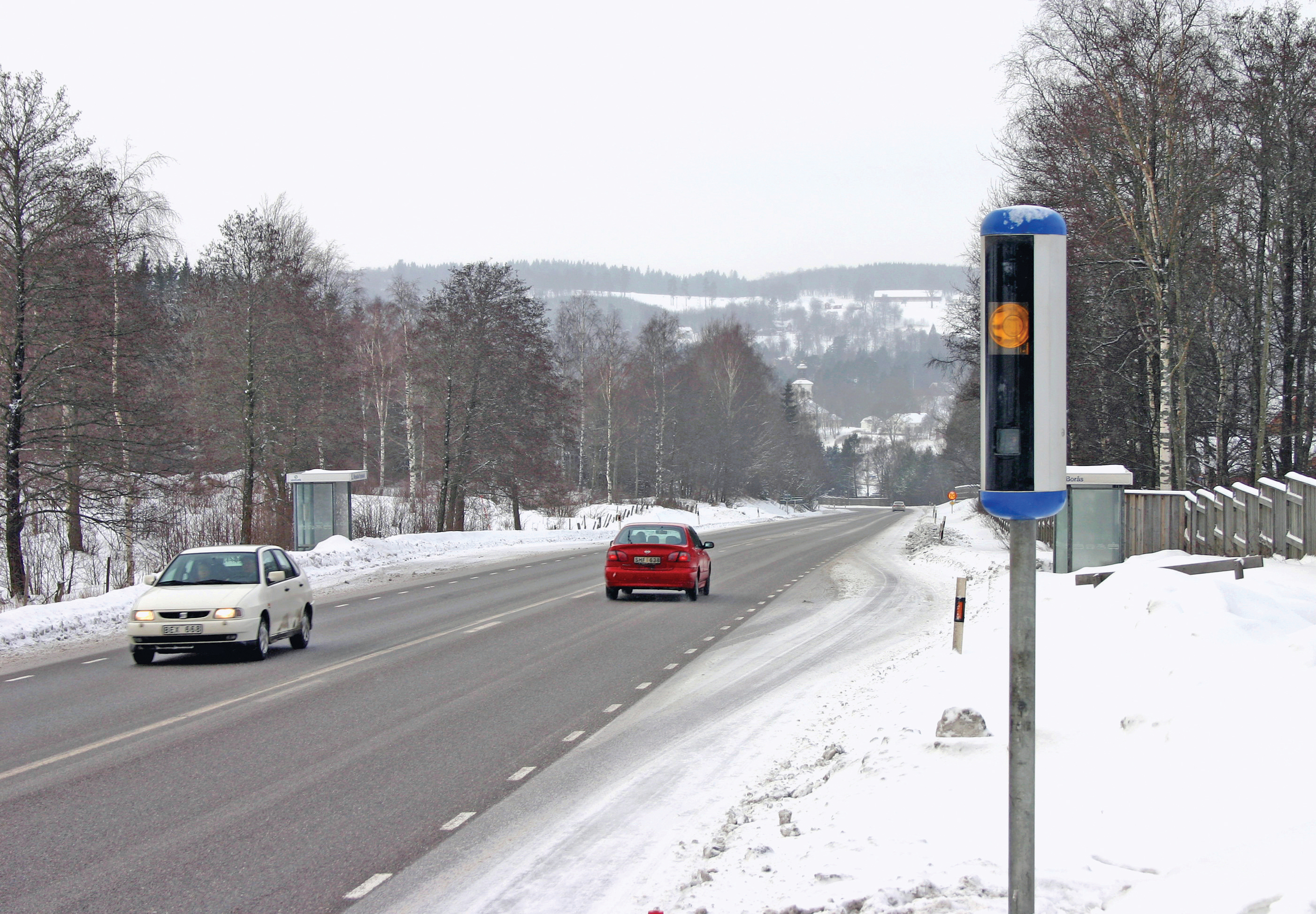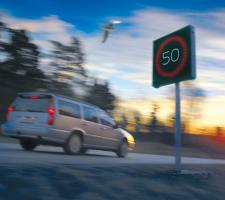
Sweden has increased speed limit compliance from 50% to above 80% (95% at camera sites), according to Trafikverket reports
Comparatively little negative comment has been made in Swedish media with regard to the country’s widespread speed enforcement, according to project manager Eva Lundberg of 6301 Trafikverket, Sweden’s Transport Administration. Lundberg is due to give a presentation at the Vienna World Congress special session on enforcement, probably with more than a passing word on public acceptance.
Trafikverket has put a lot of work into its Vision Zero road safety strategy over the past few years; much of it targeting reduction of traffic speeds. Since Vision Zero and an associated programme of enforcement were initiated in the late 1990s, Sweden has increased speed limit compliance from 50% to above 80% (95% at camera sites), according to Trafikverket reports.
Sweden now has 1100 speed enforcement cameras, but of the roughly 230,000 drivers recorded exceeding the speed limit last year, only around a third were penalised (the remainder were motorcyclists, foreign drivers or could not be recognised). “We do not see this as a problem,” Lundberg says. “The whole idea was to improve safety, partly by reducing traffic speeds. We have reduced fatalities by half, which is more important than numbers successfully prosecuted.”
The casualty reduction, Lundberg says, has been achieved by changing the mindset of drivers in Sweden, by alerting them to the criticality of certain speed thresholds for surviving collisions, and reducing speed limits accordingly at high risk sites. Other aspects of the Vision Zero policy have brought improvements to road infrastructure, such as introduction of barriers to 2+1 road layouts and a raft of urban safety initiatives.
“Where parts of the road network have experienced high numbers of fatalities, if we cannot upgrade the road then we put up cameras. It’s an engineering decision taken with comparison to other engineering options. The important thing is to inform the public of the cameras and why they are being placed there,” says Lundberg.
Matts-Ake Belin, project manager of Trafikverket’s Vision Zero Academy, has recently completed a PhD study ‘Target Zero’ in road safety. He says:
“A comparative study of approaches to speed enforcement adopted in Sweden and the State of Victoria in Australia found subtle but fundamental differences in the ideas underpinning each initiative.
In both cases the aim was to reduce traffic speed with technology.
In Victoria a strong deterrent was sought – for making drivers feel they can be caught at any time. This was successful, with fixed and mobile cameras, but the momentum has to be maintained.
“There are disputes in Australia over the motives of speed enforcement, but none such in Sweden, where there are now about 10 times as many cameras.
In Sweden it was often the road system that was at fault. Trafikverket wanted to change the perception and give the impression that changes have been made because the road was far too dangerous before.”
Alterations to Sweden’s road network have included introduction of variable speed limits at high risk sites such as road junctions or intersections, with speeds typically adjusted from 90km/hr down to 70km/hr depending on weather conditions, traffic flow and other circumstances. A field trial found that varying limits – shown on537 VMS signs – reduced speeds by 5-15km/hr.
“Traditionally our approach was towards people not willing to comply with speed limits, but we now find most people do
not want to speed and so we are focusing on more support for them with better design of the road system,” Lundberg says. “We are planning to expand speed enforcement, with further communication initiatives through the media, transport authorities and police.”
Trafikverket has put a lot of work into its Vision Zero road safety strategy over the past few years; much of it targeting reduction of traffic speeds. Since Vision Zero and an associated programme of enforcement were initiated in the late 1990s, Sweden has increased speed limit compliance from 50% to above 80% (95% at camera sites), according to Trafikverket reports.
Sweden now has 1100 speed enforcement cameras, but of the roughly 230,000 drivers recorded exceeding the speed limit last year, only around a third were penalised (the remainder were motorcyclists, foreign drivers or could not be recognised). “We do not see this as a problem,” Lundberg says. “The whole idea was to improve safety, partly by reducing traffic speeds. We have reduced fatalities by half, which is more important than numbers successfully prosecuted.”
The casualty reduction, Lundberg says, has been achieved by changing the mindset of drivers in Sweden, by alerting them to the criticality of certain speed thresholds for surviving collisions, and reducing speed limits accordingly at high risk sites. Other aspects of the Vision Zero policy have brought improvements to road infrastructure, such as introduction of barriers to 2+1 road layouts and a raft of urban safety initiatives.
“Where parts of the road network have experienced high numbers of fatalities, if we cannot upgrade the road then we put up cameras. It’s an engineering decision taken with comparison to other engineering options. The important thing is to inform the public of the cameras and why they are being placed there,” says Lundberg.
Matts-Ake Belin, project manager of Trafikverket’s Vision Zero Academy, has recently completed a PhD study ‘Target Zero’ in road safety. He says:
“A comparative study of approaches to speed enforcement adopted in Sweden and the State of Victoria in Australia found subtle but fundamental differences in the ideas underpinning each initiative.
In both cases the aim was to reduce traffic speed with technology.
In Victoria a strong deterrent was sought – for making drivers feel they can be caught at any time. This was successful, with fixed and mobile cameras, but the momentum has to be maintained.
“There are disputes in Australia over the motives of speed enforcement, but none such in Sweden, where there are now about 10 times as many cameras.
In Sweden it was often the road system that was at fault. Trafikverket wanted to change the perception and give the impression that changes have been made because the road was far too dangerous before.”
Alterations to Sweden’s road network have included introduction of variable speed limits at high risk sites such as road junctions or intersections, with speeds typically adjusted from 90km/hr down to 70km/hr depending on weather conditions, traffic flow and other circumstances. A field trial found that varying limits – shown on
“Traditionally our approach was towards people not willing to comply with speed limits, but we now find most people do
not want to speed and so we are focusing on more support for them with better design of the road system,” Lundberg says. “We are planning to expand speed enforcement, with further communication initiatives through the media, transport authorities and police.”












